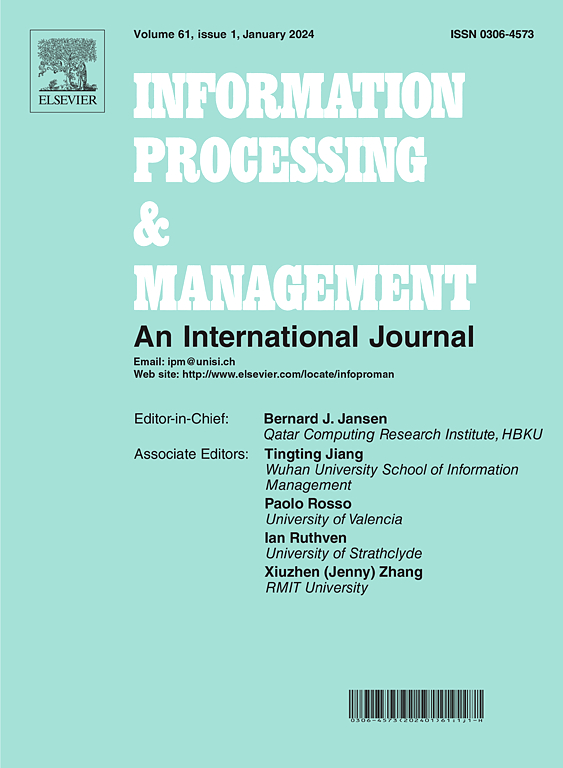Dual stream fusion link prediction for sparse graph based on variational graph autoencoder and pairwise learning
IF 7.4
1区 管理学
Q1 COMPUTER SCIENCE, INFORMATION SYSTEMS
引用次数: 0
Abstract
Recently, link prediction methods based graph neural networks have garnered significant attention and achieved great success on large datasets. However, existing methods usually rely on explicit graph structures, which is hard to obtain in sparse graphs. In addition, the incomplete graph data used for model training may lead to distribution shift between training and testing sets. To address these issues, this paper proposes a novel link prediction method for sparse graphs based on variational graph autoencoder and pairwise learning. By incorporating noise perturbation variational autoencoders, the proposed method can enhance robustness during sparse graph training. Instead of relying on explicit graph features, we reconstruct the original adjacency matrix by disturbing node feature mean encoding or variance encoding. To mitigate the impact of insufficient topological information, we introduce pairwise learning scheme, which obtains pairwise edges through negative sampling and iteratively optimize the positive and negative complementary probability adjacency matrix. Furthermore, we integrate the probability adjacency matrix and node similarity prediction based on message passing networks into a dual-stream framework to predict unknown links. Experimental results on multiple sparse networks demonstrate the superior link prediction performance of our proposed method over baseline approaches. Our method improves AUC from 0.3% to 1.5% and Precision from 1.4% to 5.2% across seven datasets.
求助全文
约1分钟内获得全文
求助全文
来源期刊

Information Processing & Management
工程技术-计算机:信息系统
CiteScore
17.00
自引率
11.60%
发文量
276
审稿时长
39 days
期刊介绍:
Information Processing and Management is dedicated to publishing cutting-edge original research at the convergence of computing and information science. Our scope encompasses theory, methods, and applications across various domains, including advertising, business, health, information science, information technology marketing, and social computing.
We aim to cater to the interests of both primary researchers and practitioners by offering an effective platform for the timely dissemination of advanced and topical issues in this interdisciplinary field. The journal places particular emphasis on original research articles, research survey articles, research method articles, and articles addressing critical applications of research. Join us in advancing knowledge and innovation at the intersection of computing and information science.
 求助内容:
求助内容: 应助结果提醒方式:
应助结果提醒方式:


